Ali Mustafa, Brent Johnson, Dillon J. Eyer, Gianella Condor, Hailee Munoz, Dr. Peter Müllner
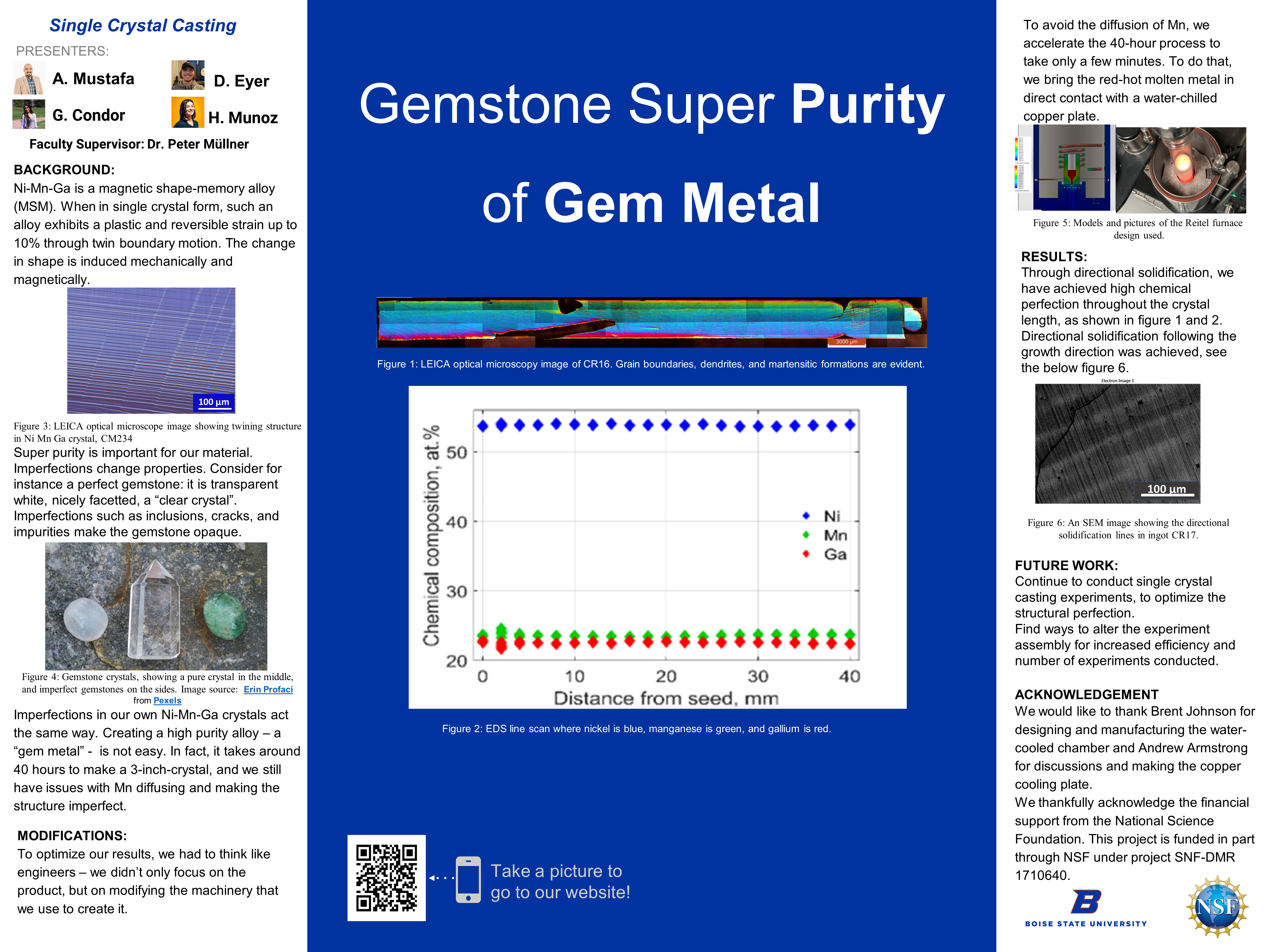
Gemstone Super Purity of Gem Metal

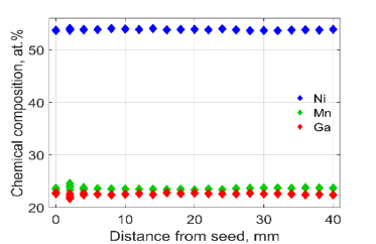
Background
Ni-Mn-Ga is a magnetic shape-memory alloy (MSM). When in single crystal form, such an alloy exhibits a plastic and reversible strain up to 10% through twin boundary motion. The change in shape is induced mechanically and magnetically.
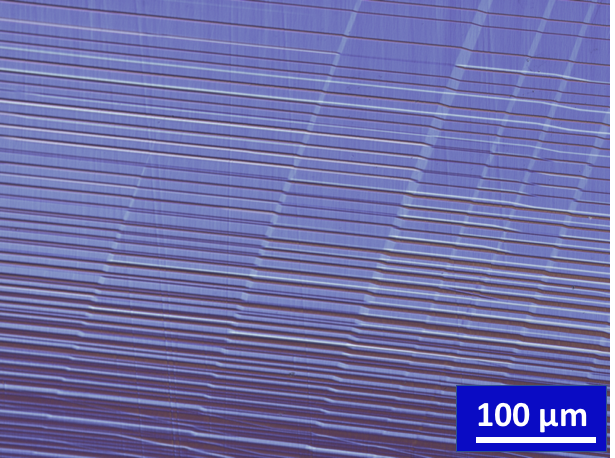
Super purity is important for our material. Imperfections change properties. Consider for instance a perfect gemstone: it is transparent white, nicely facetted, a “clear crystal”. Imperfections such as inclusions, cracks, and impurities make the gemstone opaque.
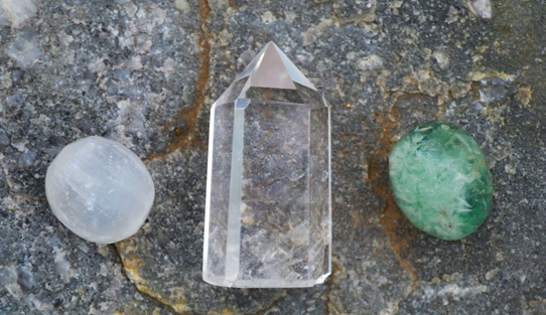
Imperfections in our own Ni-Mn-Ga crystals act the same way. Creating a high purity alloy – a “gem metal” – is not easy. In fact, it takes around 40 hours to make a 3-inch-crystal, and we still have issues with Mn diffusing and making the structure imperfect.
Modifications
To optimize our results, we had to think like engineers – we didn’t only focus on the product, but on modifying the machinery that we use to create it.
To avoid the diffusion of Mn, we accelerate the 40-hour process to take only a few minutes. To do that, we bring the red-hot molten metal in direct contact with a water-chilled copper plate.
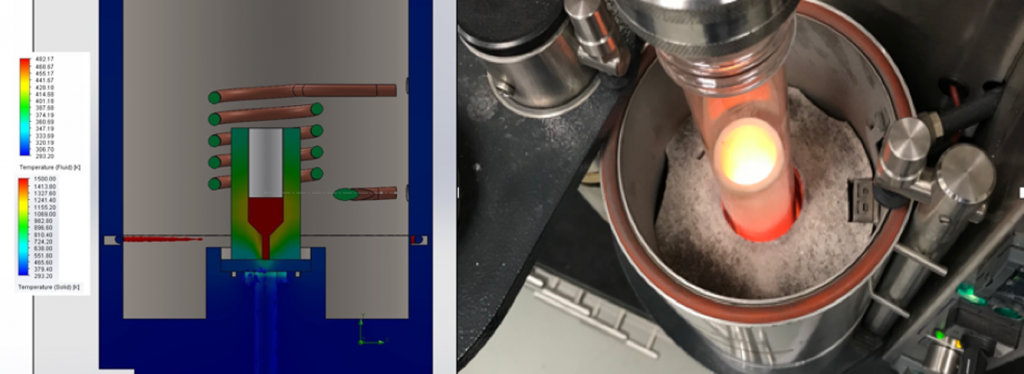
Results
Through directional solidification, we have achieved high chemical perfection throughout the crystal length, as shown in figure 1 and 2. Directional solidification following the growth direction was achieved, see the below figure 6.
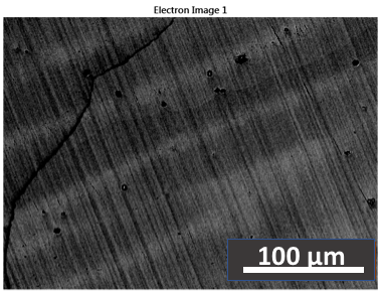
Future Work
Continue to conduct single crystal casting experiments, to optimize the structural perfection.
Find ways to alter the experiment assembly for increased efficiency and number of experiments conducted.
Acknowledgements
We would like to thank Brent Johnson for designing and manufacturing the water-cooled chamber and Andrew Armstrong for discussions and making the copper cooling plate.
We thankfully acknowledge the financial support from the National Science Foundation. This project is funded in part through NSF under project SNF-DMR 1710640.
Additional Information

For questions or comments about this research, contact Ali Mustafa at alimustafa@u.boisestate.edu.